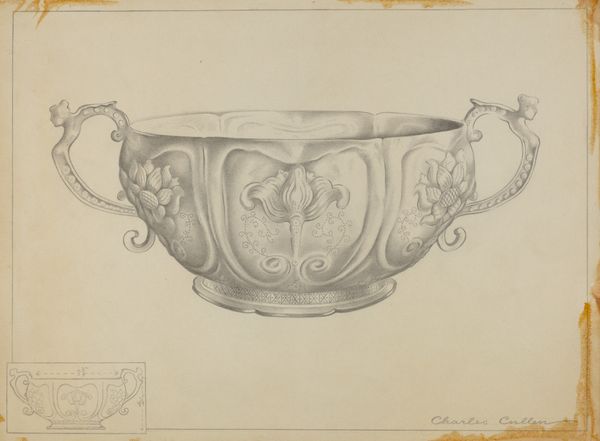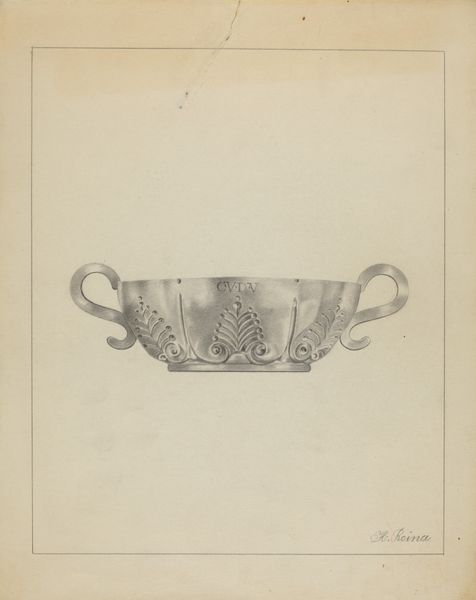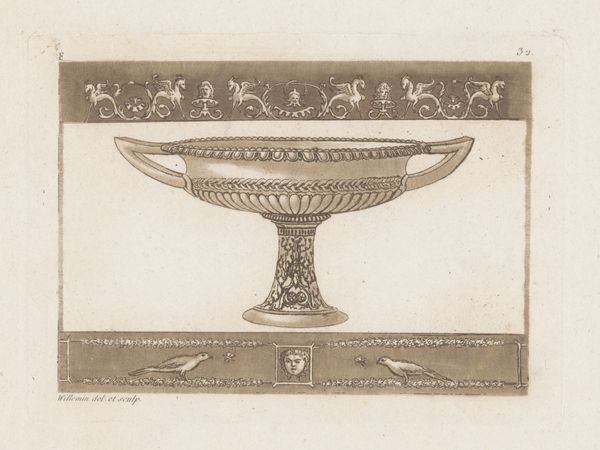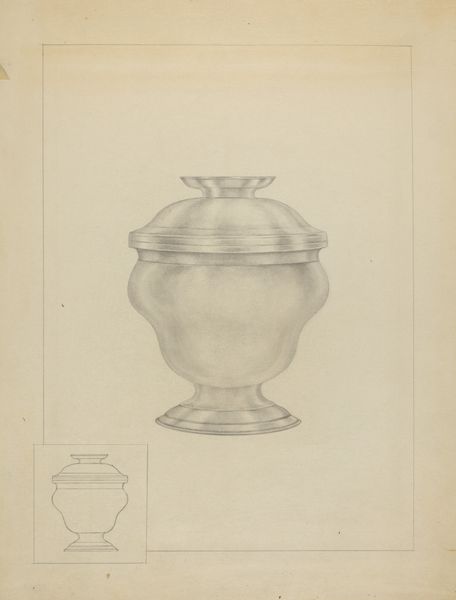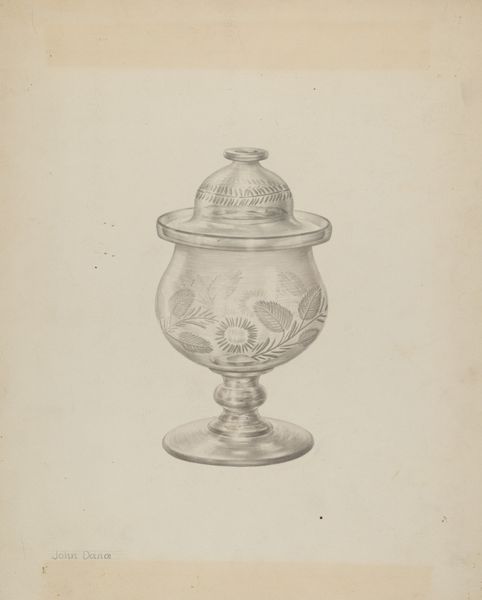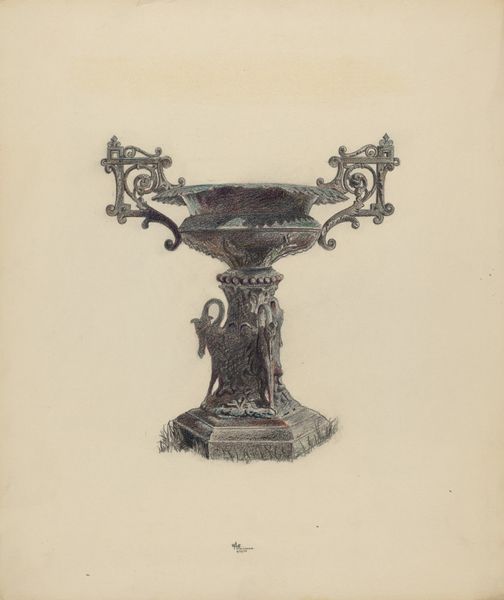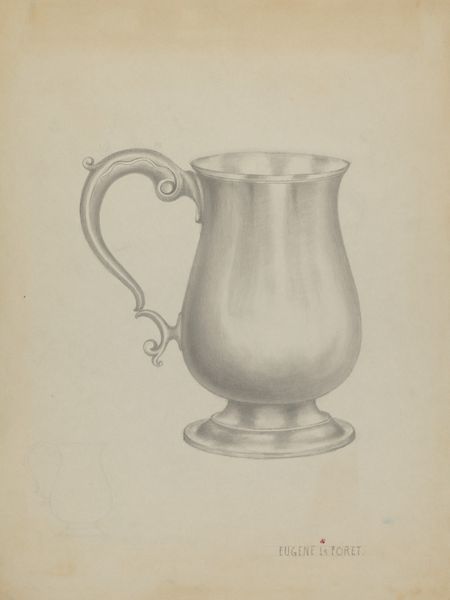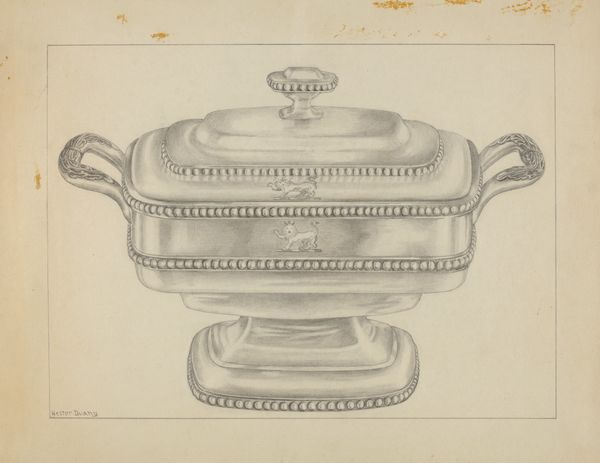
drawing, graphic-art, silver, pencil
#
drawing
#
graphic-art
#
silver
#
pencil drawing
#
pencil
Dimensions: overall: 22.8 x 29.8 cm (9 x 11 3/4 in.) Original IAD Object: 3 3/4" high; 8 1/2" wide
Copyright: National Gallery of Art: CC0 1.0
Curator: Well, what strikes me immediately is its muted elegance—it's silvery and graceful. A vessel from another time, whispering stories, you know? Editor: It is very still isn't it? We’re looking at “Two Handled Silver Bowl,” made around 1936 by Isidore Steinberg, rendered in pencil. I think it reveals quite a bit about the construction of silverware, though I imagine it felt old even then. Curator: Absolutely! I see the artist exploring light and shadow, transforming a utilitarian object into something ethereal, almost dreamlike. What stories could this bowl tell if it could talk, of whispered confidences over tea? Editor: Tea? Or perhaps the less glamorous processes, like mining the silver ore? Think of the labor involved. Also I am noticing some floral patterns here which could hint to certain socio-economical status and also what type of person might possess this particular item at that period in time. The chasing, the planishing, the whole ritualized process. That's what makes this pencil sketch feel weighty for me. Curator: You are right, it's weighted, like a tangible memory. Perhaps of someone, sitting at their work desk envisioning that they can create something of this caliber someday. There's a deep longing embedded in its simplicity. Editor: Agreed. Steinberg really captured its form so precisely, you know? Consider the time investment alone for him—translating something meant for tactile experience into pure visual representation. So where does “art” start and production stop? Curator: Isn't that the perennial question? For me, the beauty lies precisely in that alchemy. Steinberg transformed labor into reverie. You look at that swirling monogram—so delicate, I see a whole other kind of labour in it, if that makes any sense at all? Editor: Yes I think I follow. It is about seeing these historical connections beyond some bourgeois fairytale about elegance and tradition; more about acknowledging labor conditions but in this case the work on metal and not paper or drawing. Curator: Precisely. It prompts a deeper empathy, an acknowledgment of the invisible hands that shape our world, past and present, no? Editor: Ultimately. A sketch reminding us not just of silverware’s gleam but also what human energy it took to put it in existence. That, makes you see the true beauty of it.
Comments
No comments
Be the first to comment and join the conversation on the ultimate creative platform.

